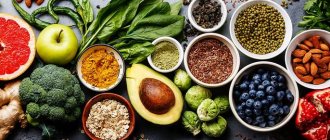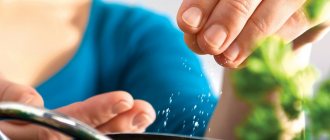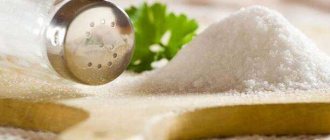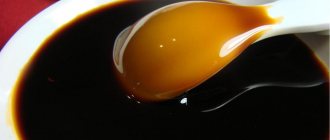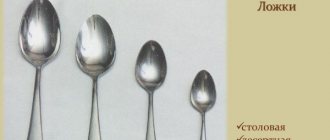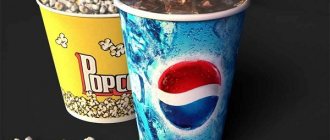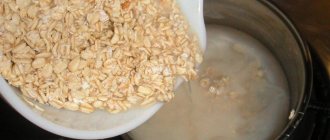Share:
Many people, in their pursuit of a healthy lifestyle, think about how to give up salt. After all, we have been told since childhood that salt is poison. Is it so?
The norm for salt consumption is 3-5 grams per day, that is, one level teaspoon. This is the recommendation given by WHO in the guide “Sodium Intake for Adults and Children”. Most people consume this flavoring in quantities exceeding the norm (sometimes 2 or more times), which leads to increased blood pressure, diseases of internal organs and even cancer. Avoiding salt will improve your well-being and help you get rid of swelling and excess weight. However, you need to give up the habit of adding salt to your food correctly. From the article you will learn what giving up salt gives and how to properly quit the habit of adding NaCl to food.
What are the benefits of giving up salt?
Scientists from Tufts University (USA, Massachusetts) conducted the largest study on the effects of salt on the body in 2017. The researchers concluded that limiting salt intake is not a dietary fad, but a vital necessity. Scientists have calculated that excess salt causes every tenth death.
In turn, reducing salt consumption, or rather refusing to add additional salt to dishes, has a beneficial effect on the functioning of many systems and organs. Let's consider the most likely positive consequences of salt-free diets. Read more about the study in the source.
There are several good reasons for giving up salt, and they will affect the following aspects of your life:
- improvement of appearance;
- improvement of well-being;
- stabilization of psycho-emotional state.
- positive restructuring of taste sensations.
Appearance
Sodium chloride retains water in our body, which leads to facial puffiness. And for those who suffer from hypertension or have problems with the kidneys and excretory system, swelling of the extremities also occurs. By stopping using NaCl, you will get rid of swelling and love your reflection in the mirror.
The second point of improving your appearance is losing weight. In 2 weeks of complete abstinence from salt and proper nutrition, you will lose 3-4 kilograms of excess weight.
Well-being and immunity
A salt-free diet stabilizes blood pressure, improves the functioning of the cardiovascular system, relieves headaches due to chronic fatigue, and helps the body tolerate stress more easily. As a result, overall well-being improves and the body's resistance to infectious and viral diseases increases.
Psycho-emotional background
Every time you show willpower and get a tangible result of this action, your self-esteem, self-confidence increases, and your mood improves. By adhering to a salt-free diet, you will not only improve your health, but will lift your mood and stabilize your overall emotional background.
New taste of food
Without sodium chloride, food will take on a new taste. You will feel the true taste of fresh tomatoes, cucumbers, bell peppers, and try new combinations of products. Your taste buds will simply “reboot” and begin to sense the taste of food more acutely.
How to remove excess salt from the body
The most obvious option seems to be: drink more water. The liquid will dilute the sodium and remove it through the kidneys. But in fact, this method is doubtful.
Our body is designed in such a way that the amount of water and the level of sodium are interrelated. Water and Sodium Balance / Merck Manual. There is always approximately the same amount of sodium dissolved in body fluids (and other electrolytes, but they are not too important in this case). This indicator is called osmolarity Fluid and Electrolyte Balance / Molecular & Cell Biology.
In order for a person to remain healthy, osmolarity must be within a certain, fairly narrow range. Therefore, when you drink and the amount of moisture increases, the body begins to retain sodium with all its might in order to maintain its concentration. In addition, all together this leads to an increase in blood volume, an increase in blood pressure and additional stress on the heart and blood vessels.
In general, deliberately drinking water to get rid of excess salt is not the best solution. Does Drinking Water Flush Out Sodium in the Body? /LiveStrong. There are much more effective and scientifically proven ways.
Work up a good sweat
The key here is “properly.”
Sodium, like other electrolytes, that is, potassium and chlorine, can leave the body along with evaporating moisture. But as long as you don't sweat too much, there's little sodium in your sweat: Lindsay B. Baker is absorbed by your sweat glands before it reaches the skin's surface. Sweating Rate and Sweat Sodium Concentration in Athletes: A Review of Methodology and Intra/Interindividual Variability / Sports Medicine back. This mechanism is called reabsorption.
However, the absorption capacity of sweat glands is not infinite. At a certain stage, when the rate of sweating increases, the body can no longer Nicola Gerrett, Tatsuro Amano, Yoshimitsu Inoue, George Havenith, and Narihiko Kondo. The effects of exercise and passive heating on the sweat glands ion reabsorption rates / Physiological Reports retain all sodium.
Sodium in sweat is still contained in the same form of chloride. Therefore, there is B Lara, JJ Salinero, F Areces, D Ruiz-Vicente, C Gallo-Salazar, J Abián-Vicén, J Del Coso. Sweat sodium loss influences serum sodium concentration in a marathon / Scandinavian Journal of Medicine and Science in Sports. clear connection:
The saltier the sweat, the higher the sodium loss.
Scientists are still studying the mechanisms of electrolyte release during sweating. Thus, it is already known that the absorption capacity of sweat glands varies depending on the type of heating (there is a difference whether you sweat during training or in a bath), the level of physical fitness of a person, heat habit, and area of the body. All these nuances can affect sodium loss. How exactly has not yet been established.
But it is already absolutely clear: the more you sweat, the more sodium is removed from the body.
Stay hydrated, but avoid sports drinks
If you are actively sweating, you need to restore the amount of moisture in the body. At least to have something to sweat and to remove salt with. Additionally, if you lose too much fluid and don't replace it, you run the risk of dehydration and the associated hypernatremia Hypernatremia (High Level of Sodium in the Blood) / Merck Manual. This is the name for a dangerous condition in which sodium levels in the blood rise sharply: the body simply does not have enough moisture to keep osmolarity in the normal range.
So watch how much you drink during the day. Average norm Water: How much should you drink every day? / Mayo Clinic is:
- men should consume at least 3 liters of water per day;
- women - at least 2.2 liters.
The necessary moisture can be obtained from various sources: compotes, fruit drinks, tea. And sports drinks. They are often recommended for people who actively exercise because they contain carbohydrates and electrolytes. But if right now your goal is to get rid of excess salt, it is better to avoid such drinks. Many of them, in addition to other electrolytes, add Hydration: Why It's So Important / American Academy of Family Physicians. large doses of sodium.
Eat foods rich in potassium
Experts from the American Heart Association tell A Primer on Potassium/American Heart Association: Potassium helps remove sodium from the body. They are echoed by scientists at the University of Michigan, who briefly formulate Potassium (K) in Blood Test / University of Michigan Health System (UMHS) the relationship between the two electrolytes:
The more potassium, the less sodium, and vice versa.
The fact is that in the cells of the human body there are Physiology, Sodium Potassium Pump / StatPearls Publishing so-called sodium-potassium pumps. They pump potassium inside the cells and at the same time remove excess sodium from them so that its concentration outside is always higher. This is necessary so that the kidneys can filter the blood properly.
If there is more potassium, the pump works more actively, which means the sodium concentration in the blood increases faster. As soon as it reaches a certain level, the mechanism of pressor natriuresis is triggered. H Karppanen, P Karppanen & E Mervaala. Why and how to implement sodium, potassium, calcium, and magnesium changes in food items and diets? /Nature. This complex term can literally be translated as follows: excretion of sodium in urine (urine) using increased pressure.
In general terms, the process of natriuresis looks like this. Excess sodium stimulates the heart, and it begins to pump out blood with greater force. Blood pressure rises. This affects the kidneys: they filter the blood more actively and remove excess sodium in the urine. As soon as the balance can be restored, the pressure returns to normal.
So to help your body get rid of excess sodium more easily, the American Heart Association recommends A Primer on Potassium/American Heart Association to eat potassium-rich foods:
- bananas;
- avocado;
- potato;
- greenery;
- spinach;
- mushrooms;
- peas;
- tomatoes and tomato juice;
- oranges and their juice;
- plums, apricots and their juice;
- raisins and dates;
- milk with fat content up to 1%;
- low-fat yogurt;
- tuna and halibut.
The benefits of avoiding salt for weight loss
If you are training with the goal of losing excess weight and shaping your figure, then by stopping eating salty foods, you are more likely to achieve the desired result. NaCl retains the water-salt solution in adipose tissue
Eliminating salt is especially useful for athletes involved in sports such as figure skating, gymnastics, and martial arts, where every 100-200 grams of weight can affect their own performance or weight category.
Avoiding excessive salt intake will benefit anyone working out at home or in the gym. Less salt means less excess fat in the body.
Salt: benefits and harm for humans
Before moving on to a direct consideration of the reasons, it is necessary to understand what salt is and what effect this product has on the human body. NaCl is a natural product for humans, which is responsible for the processes of fluid regulation in the body, and its complete removal from the body is impossible. This component is contained in literally every cell, not to mention blood and plasma, and is excreted through the excretory system (urine, tears, sweat). Lack of salt can lead to various types of diseases, and this phenomenon is especially dangerous for children.
But it is worth distinguishing between the NaCl that is a product of natural synthesis and the one that is sold on store shelves. The latter undergoes many different types of processing and, if consumed excessively, can greatly harm the body. A complete abstinence from table salt will not lead to any negative consequences, and in some cases will even have a positive effect. But why should you refuse this product? Let's look at the main reasons.
Will there be any harm if you don't eat salt at all?
Is there any harm in not eating salt? The valuable element that we get from table or table salt is sodium. In addition to salt, it is found in many foods that we eat for breakfast, lunch or dinner. Therefore, if you stop adding white crystals from the salt shaker to your food, you will not lose anything.
Table of foods that contain the most sodium:
| The product's name | Amount of sodium (mg/100 grams of product) |
| White bread, rich loaf | 240-250 mg |
| Rye bread | 430 mg |
| Cornflakes | 660 mg |
| Sauerkraut | 800 mg |
| Canned beans | 400 mg |
| Mushrooms | 300 mg |
| Beet | 260 mg |
| Celery | 125 mg |
| Raisin | 100 mg |
| Bananas | 80 mg |
| Dates | 20 mg |
| Currant | 15 mg |
| Apples | 8 mg |
| Milk | 120 mg |
| Cottage cheese | 30 mg |
| Eggs | 100 mg |
| Hard cheese | 1200 mg |
| Beef, pork | 100 mg |
| Fish | 100 mg |
You can download the table here to always be aware of the salt content in other foods.
When adding salt to food, remember that it already contains sodium. An excess of this chemical element is just as bad as its deficiency.
What is “hidden” salt and what does it contain?
We consume salt not only in its pure form, when we take a salt shaker and add salt to a specific dish. Many foods contain “hidden” salt: canned food, including olives and capers, pickled foods, tomato paste, cheeses, and sausages.
Photo: istockphoto.com
Salt is found even in confectionery products, the nutritionist notes, and in many snacks: chips, crackers, nuts. And this also needs to be taken into account.
How to gradually give up salt?
Adding salt to food is a habit that has been compared to smoking, however, giving it up is easier than quitting smoking . Is it possible to completely give up salt? Of course yes! The main thing is to gradually get used to the new taste of food, teaching your body to do without this ubiquitous product. A few simple principles will help you train yourself to eat less salty foods and not add NaCl when preparing food.
Read the composition
When buying products in a supermarket, carefully read the ingredients on the packaging. Choose seasonings and spices without salt, as well as other products that contain minimal sodium chloride. It is desirable that the description indicate less than 0.3 g per 100 grams of product. If a larger quantity is indicated, refuse to purchase. To determine the amount of salt in a product, multiply the amount of sodium in its composition by 2.5.
Add pepper and other spices to your dishes
Red and black pepper, dried spices and herbs, chili peppers not only give the dish an appetizing aroma, but also brighten the taste of the food. With them, it will be easier for you to quit the habit of using salt from a salt shaker to prepare salads or other dishes. Do not overdo it when adding spices, so as not to cause problems with the gastrointestinal tract.
Eat fresh greens
Parsley, dill, celery, lettuce, coriander, basil, and green onions add special flavor notes to food. You definitely don't want to overpower them with salt. Properly combine greens with other vegetables. The taste and aroma of boiled potatoes is enhanced by dill, basil “suits” tomatoes, and lamb and beef dishes go perfectly with rosemary and coriander.
Avoid ketchups, mayonnaises and sauces
Mayonnaise, ketchup, soy sauce and mustard contain a lot of salt. By adding them to the main dish, you increase the salt content. If you want to eat healthy foods, stop eating them.
Instead of store-bought mustard in a jar, buy dry mustard powder. Mix a small amount of powder with water and sugar. You'll get the same tangy flavor as ready-made mustard from the supermarket, just without the salt.
Replace sauces with low-fat sour cream or a mixture of garlic, herbs, lemon juice and cilantro or arugula. This mixture will give the dish a light piquant taste and a special aroma. It goes well with fish and meat dishes, rice, and sushi.
Eat homemade food
Surely you have noticed that after eating fast food, pies or dumplings from the supermarket, you are thirsty. They add a lot of salt to make them last longer. Eliminate these “treats” from your diet first.
Try to cook more yourself using the fresh ingredients you buy. Take a light, healthy snack with you to work that will replace pizza, buns and other useless foods that contribute to obesity and gastrointestinal problems.
What is salt for?
Table salt (or sodium chloride, NaCl) is a white mineral. Its crystals dissolve well in water at almost any temperature and are present in the liquid in the form of positively charged sodium ions and negatively charged chlorine ions. The biological significance of these elements is high.
The mass of sodium in the human body is about 100-150 g. It is a macroelement, which is found in larger quantities in the extracellular space. It performs the following functions:
- maintains osmotic pressure and acid-base balance of the environment;
- helps in the transport of substances across cell membranes;
- together with potassium, it distributes impulses in nerve and muscle tissue;
- activates digestive enzymes;
- participates in the secretion of gastric juice;
- stimulates the excretion of metabolic products by the kidneys;
- takes part in reactions with protein compounds.
In the body of an adult, chloride ions are contained in an amount of 50 g. They are also involved in maintaining the parameters of the internal environment: fluid volume, acid-base balance inside cells and in the extracellular space, and are responsible for ion transport. Chloride ions serve as a source of hydrochloric acid, which plays an important role in digestion processes:
- preparing protein for digestion (denaturation);
- creating the required pH value for the pepsin enzyme to work;
- release of vitamins (B6, B7, B12) and iron for absorption into the blood;
- stimulation of secretion of the duodenum and pancreas.
In addition, hydrochloric acid has a bactericidal effect, protecting the body from microorganisms that enter the stomach with food.
0.86% aqueous NaCl solution is the so-called physiological solution. It has the same osmotic pressure as blood plasma. This allows the use of sodium chloride as a solvent for intravenous administration of drugs.
Chlorine and sodium are found in almost all foods, but salt is the main source of these elements. The mineral is almost 97% represented by NaCl molecules, about 3% is calcium, magnesium, and iron.
Consequences of not eating salt
Should I give up salt? An analysis of the positive and negative effects of a salt-free diet will help you make a decision.
Positive effects of not eating salt:
- Stabilization of blood pressure, prevention of thrombosis, stroke.
- Getting rid of swelling on the face and limbs.
- Normalization of the excretory system, reducing the likelihood of kidney stones, reducing the load on the kidneys.
- Reducing the risk of diseases of the musculoskeletal system (arthritis, arthrosis).
- Weight loss by an average of 1.5 kilograms per week.
- Improving vision by normalizing pressure in the circulatory system and proper drainage of fluid from the tissues surrounding the optic nerve.
- Increased sensitivity of taste buds.
Negative consequences:
The salt-free diet is a strict nutrition program. It will be hard for you to get used to it in the first week. The food will seem tasteless and bland. Appetite will decrease and there will be a slight emotional decline. However, this condition gradually passes and health improves.
Note! The condition may worsen in the first days. Experts recommend reducing the amount gradually until you stop completely.
How to replace salt?
We offer you a list of ingredients, each of which contains natural sodium chloride or, according to your taste, perfectly replaces it:
- Sea kale (kelp). It is naturally endowed with a salty taste and is also a rich source of iodine and other vitamins and minerals. We are not talking about pickled kelp, the taste of which is complemented with salt and spices, but about it in its fresh, original form. If fresh seaweed is dried in an electric dryer and ground in a coffee grinder, the resulting powder can be used as a salt substitute. And iodized. You can also use fresh (or soaked dry) seaweed directly in cooking, adding it to salads, soups, and other dishes.
- Garlic. This owner of a specific aroma and pungent taste strengthens the immune system, rejuvenates the body and has an anti-cancer effect. Among other effects, garlic is characterized by a decrease in the body's need for salt. In addition to fresh garlic, you can use dried and ground garlic as a seasoning (like kelp). These forms of garlic are characterized by a pleasant, milder taste and have a positive effect on overall health.
- Onions - green and onions. This is a rich source of sulfur, which purifies the blood and destroys bacteria in it. It is sulfur that provides the pungent aroma and taste of onions, and thanks to them, onions are an excellent alternative to salt.
- Dried vegetables. Similarly, dry kelp or garlic in an electric dryer or purchase ready-made spices. Dried tomatoes, bell peppers, and celery root have a salty taste. When properly dried, they retain both their rich aroma and concentration of vitamins, which means they are much more useful and interesting to use than salt. If you buy chopped dried vegetables in the form of spices, pay attention to the information on the composition - so that the vegetables are not mixed with flavor enhancers and directly with salt.
- Lemon juice. In terms of taste, lemon juice added to a dish is almost indistinguishable from salt. And if you add some other spices to lemon juice you will get a delicious salad dressing.
- Vinegar. Another source of acid that replaces the saltiness in the dish. It is better to use natural vinegars - apple, wine, balsamic, rice. Some of them are flavored with herbs, which is suitable not only for salads, but also for meat and fish. Using vinegar, you can prepare delicious sauces in which no one will notice the absence of salt.
- Ground spices and herbs. Their variety is great - allspice and paprika, curry and coriander, horseradish and ginger, cilantro and parsley, fennel and dill, oregano and tarragon, thyme and sage, basil and rosemary, cumin and celery seeds. All this can be used to prepare sauces, soups, salads, and marinate meat and fish in spices. If you add such spices to foods that naturally contain sodium chloride, add vinegar or lemon juice, or even the slightest amount of salt, the benefits for the body of the resulting dish will increase significantly.
- Soy sauce. Soy sauce certainly contains salt in its composition. At the same time, it has a unique aroma and is rich in useful minerals, vitamins, and amino acids. High-quality soy sauce is an excellent alternative to common salt, which, apart from its salty taste, does not differ in any aromatic notes. And since salt-free diets are still low in quantity, but still allow for sodium intake, it is quite normal in soy sauce.
Based on the above components, you can prepare delicious sauces. If you combine individual components with each other, then slightly salty, or even not salty at all, they in combination will provide the necessary taste sensations. We offer you the following combinations:
- any vegetable oil + grated onion + garlic + fresh herbs + lemon juice;
- any vegetable oil + lemon juice + fresh herbs + mustard seeds or mustard powder;
- seaweed powder + toasted flaxseeds + garlic + fresh herbs;
- soy sauce + honey + mustard seeds or powder;
- lemon juice + garlic + chopped onion + floured nuts (any);
- vegetable oil + lemon juice + mustard + pepper = homemade mayonnaise, but without using salt;
- sour cream + lemon juice + dried horseradish powder + crushed coriander grains.
Reason #7. Water imbalance
During the course of the article, it has already been mentioned several times that when consuming salt in excess of the norm, the water balance is disturbed, and this is directly related to the characteristics of the human body. The fact is that NaCl is an integral part of it and this component is needed for the normal functioning of our body, namely, for fluid circulation. When there is too much salt, the excretory system cannot cope with the load and fluid begins to accumulate in the body. If NaCl itself goes into the fatty layers, then water goes into the intercellular space, which leads to the formation of tumors and edema. This can be easily observed even without special experiments, for example, when you ate fatty and salty meat in the evening, and the next morning you observe a swollen face in the mirror.
Interesting fact! Modern companies that produce milk add a certain amount of salt to cows' food. Thanks to this, one animal can produce much more milk during its life cycle than with standard feeding methods. But a fairly large proportion of salt ends up directly in the dairy products that we consume daily, so you need to carefully read the ingredients when purchasing them.
Reason #3. Increased load on the excretory system
The body removes salt products with the help of sweat, tears and urine; accordingly, with a large amount of it, the load on the kidneys and various glands increases, which can eventually simply fail. NaCl is practically insoluble in natural liquids, since they also contain salt-containing acids. As a result, the kidneys cannot cope with the load, and stones begin to form here, and this is a serious reason for concern, since they can only be removed from the body surgically. The exception is the initial stages of urolithiasis, when the stones themselves have not yet completely hardened.
